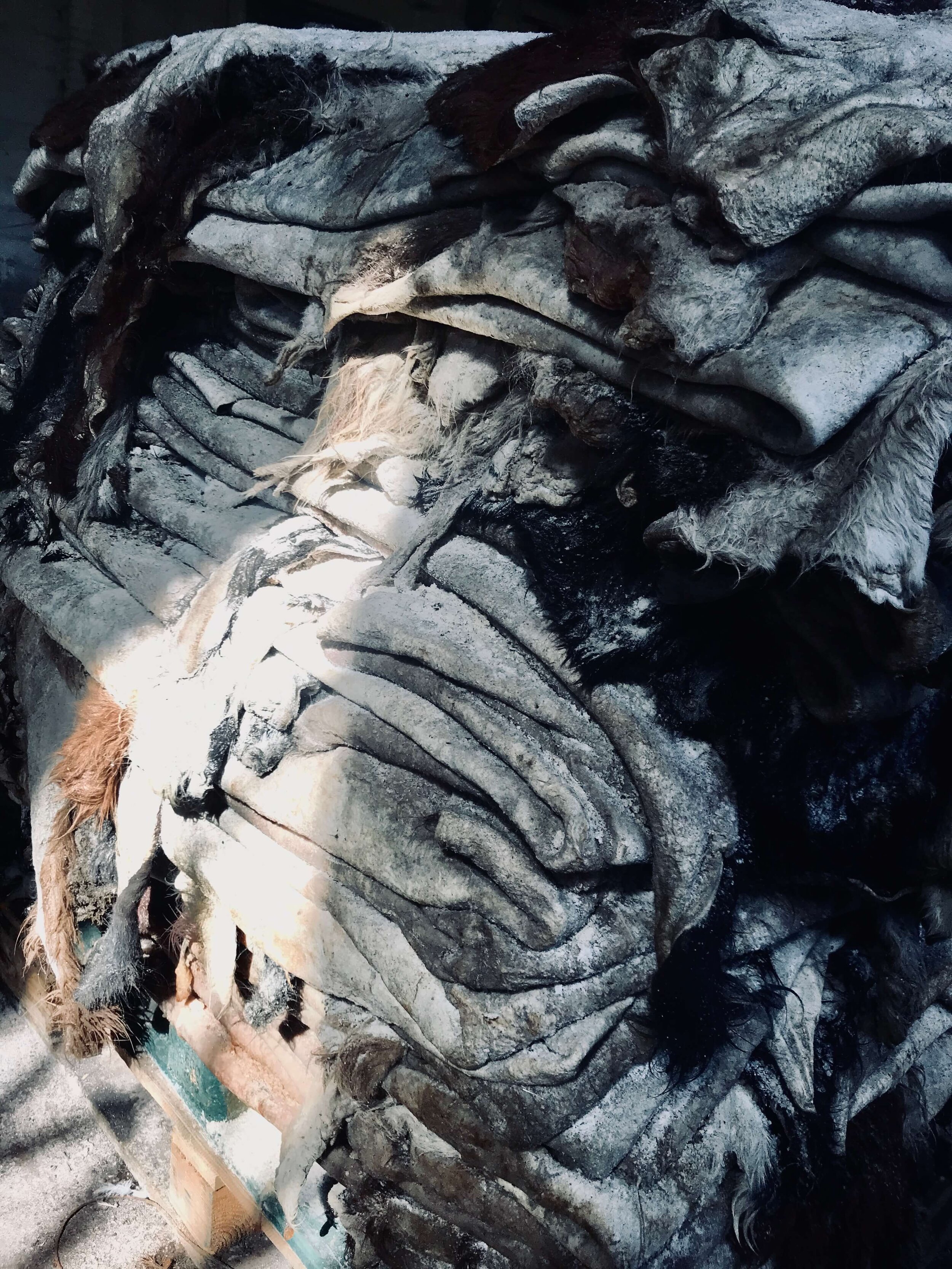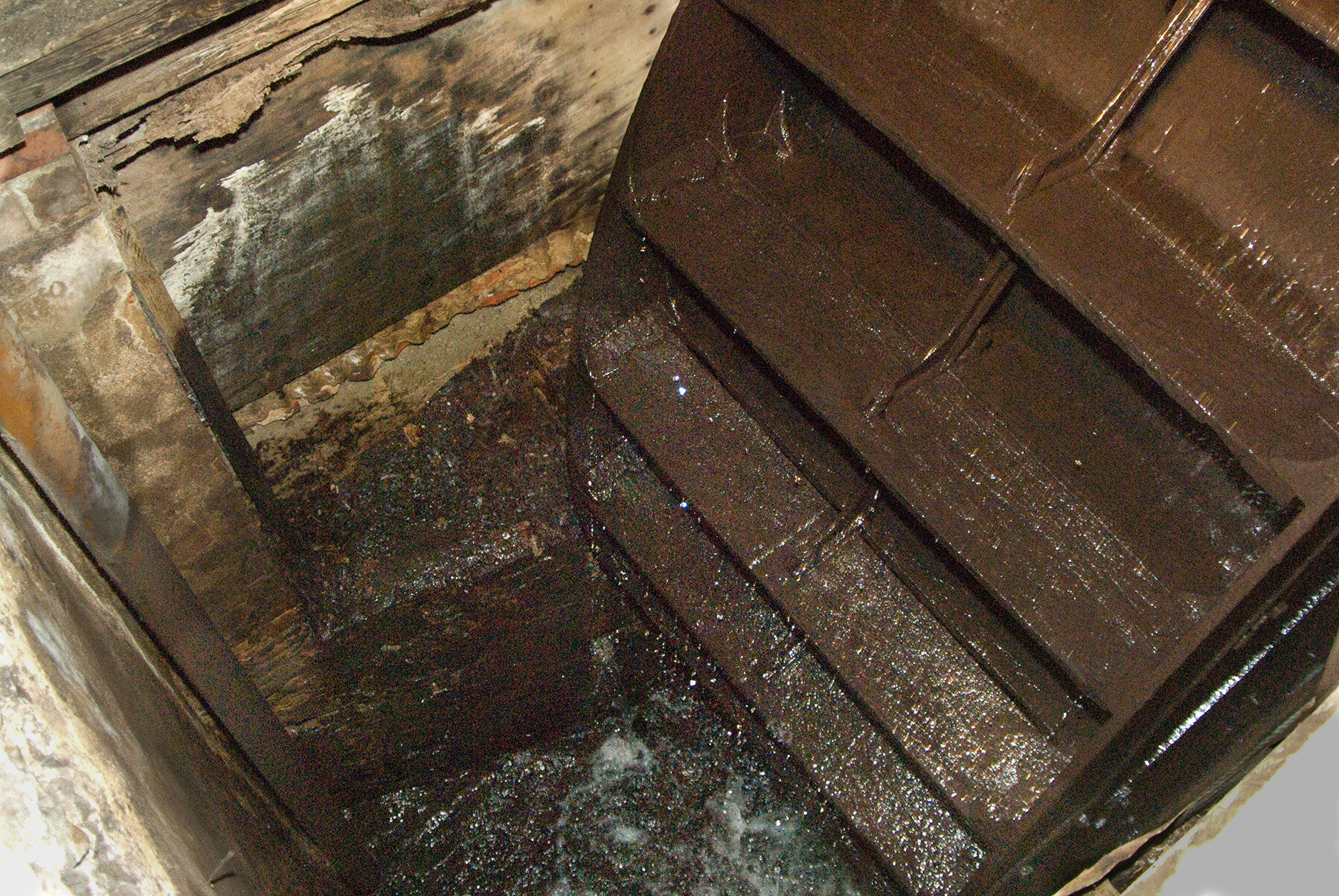J&FJ BAKER
SUSTAINABILITY
J&FJ BAKER
J
& F.J Baker is proud to continue traditions that have always been sustainable, as well as making adaptations to our Tannery to make it even more sustainable. From our materials to our energy consumption, we strive to choose suppliers and methods that cause the least environmental impact possible. Our leather is the strongest and most durable there is, so your products will last a lifetime.
Our hides are sourced locally in Devon. As a by-product of the meat industry, we are taking waste and turning it into something beautiful, versatile, and durable. The Devon geology lends itself to free-range farming of beef and as such, the hides we use come from farming methods that are considered low impact. Cattle fed on grass produce less gas and grass that is continually grazed absorbs more gases. Sourcing hides locally ensures the carbon footprint of transporting the hides is kept to a minimum.

J&F.J Baker leather hides
We are the only Oak bark tannery remaining in the UK. While other tanneries turned to other tanning methods to produce more leather faster, we stuck to the traditional, slow method of Oak bark tanning because it yields stronger, luxurious leather without producing waste that is difficult to dispose of. We only use oak bark and water to tan our hides. Our bark comes from Coppiced Oak trees grown in Cumbria for carpentry and charcoal. To find out more about how our bark is grown and harvested visit: www.coppicenorthwest.org.uk


Oak Bark from Coppiced Oak Trees grown in Cumbria

The final touches: hand finishing leather using a secret blend of greases
We wrap and ship our products using as little plastic as couriers and international shipping merchants will allow. Often our leather is wrapped only in corrugated cardboard and wax paper. This protects the leather and allows it to breath and can easily be reused or recycled.
Each piece of leather takes approximately 15 months to produce. During this time, it has to be soaked continuously in Oak bark tan and gently moved for 12 months to ensure an even tan without marks left where skins have touched. We use a 400 hundred-year-old mechanism that is run by our water wheel to achieve this.
This process is completely carbon neutral; it uses no electricity, or non-renewable energies. The mechanism gently raises and drops wooden columns that push on wooden frames from which leather is suspended. These frames sit over pits filled with Oak Bark tan and the hides gently soak, washing through the solution as the columns rock the frame up and down.
The same water wheel is also used to run a grinding machine that grinds the big pieces of bark into much smaller pieces. This maximises the amount of tannins that leak into the water to turn the raw hides to leather. This is a labour-intensive, two-man process, pieces of bark have to be fed into the grinder one by one and the crushed bark shoveled away. Labor intensive but uses no energy!
In fact there are many part of our process where we chose to use manpower instead of machine power, such as moving the hides between pits and sheds and staining and finishing the leather by hand. This is partly due to tradition, partly the restrictions of such old buildings but it all goes towards producing leather of the highest quality in a sustainable way. The machines we do use are often over 100 years old and keeping such machines in working order takes knowledgeable and skilled engineers. Many of these machines are irreplaceable. We don’t update machines until we absolutely cannot keep running them because parts are no longer manufactured, or we cannot come up with an ingenious way to adapt them. A de-commissioned machine is often kept on site for parts and spares, all with the aim of cutting down unnecessary waste.

The mechanism behind is our waterwheel that drives the bark grinder and tanyard 'agitation' system.

Leather rolled out and pressed and finished
We do not use chemicals in our production of leather, so we do not have harmful effluent to dispose of.
We have funded and run our own research and development program to transform our solid waste. Hair, fat and offcuts from the hides into a waste-to-energy disposal system. Disposal of animal products is limited, by law, to incineration or landfill. We have invested in a biomass boiler capable of incinerating our waste products whilst producing heating for parts of our tannery. This biomass boiler runs alongside conventional boilers and reduces the amount of gas we use to dry the leather following the tanning process. We hope to continue improving this system to move away from fossil fuels entirely.
Any water waste is pumped to a series of soak-aways, for filtration.
Spent bark is composted for gardening.
As the proud owners of a historic, working water wheel, we are looking into adapting it to produce renewable electricity. This will take time and investment but if we can power our tannery with electricity produced onsite, we will be taking a huge step towards becoming carbon neutral.
As and when our buildings require renovations, we will, where possible, install solar power. We are always looking for ways to improve and adapt our buildings whilst preserving their history.